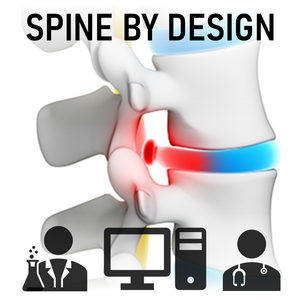
Herniated discs are a highly prevalent back injury which can cause significant pain, and typically require surgical intervention. Among spinal surgeries, there are two major options: microdiscectomies and spinal fusions. Microdiscectomies are less invasive and have quicker recovery times; however, 5-10% of microdiscectomy patients reherniate, leading to additional surgery costs, longer patient recovery times and lost productivity. With approximately 300,000 of these surgeries performed every year, that’s up to 30,000 patients annually who experience this painful and costly complication. If patients with a high likelihood for this complication could be identified prior to surgery, patients could be advised to choose an alternative treatment strategy and their risk could be mediated.
Many factors are associated with higher reherniation risk, but the contribution of these factors, either individually or in combination, and resultant patient-specific likelihood of reherniation is unclear. Our team has successfully created a predictive tool capable of compiling all of the potential risk factors for reherniation and reporting a single unified probability of risk. Our mathematical model was capable of correctly identifying 98% of herniation patients as either at risk or not at risk of reherniation in a retrospective cohort of 350 patients from one institute. The mathematical model is based on metrics measured on image radiographs and MRI, and collected from the patient electronic record.
Expansion of this work to multiple institutes was necessary to ensure adequate specificity and sensitivity of the model. Results have been collected from 4 institutes in 3 countries thus far, showing that predicted reherniation likelihood was higher in patients who reherniated; however, overall % correct classification is poor in some cases. We have determined that this results from physician inter-evaluator variability in measuring model input metrics from radiographs. Therefore, the current objective of this project is to create a new technology that minimizes this variability in patient evaluation using fully automated image processing by machine learning. We hypothesize that developing fully automated software to calculate the input metrics for the model will create more consistency among institutions and improve the predictability of the mathematical model. The model might then be able to reduce surgical complications not only among the participating institutions, but also in external institutes, enabling this software to potentially become a standard of care.
